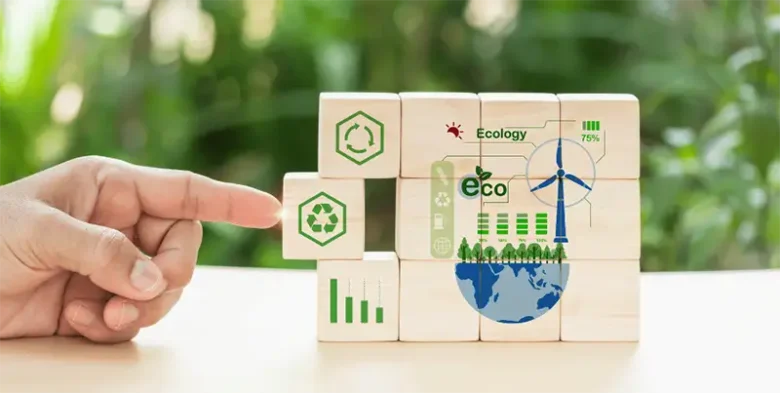Industries in the manufacturing sector across the world are experiencing an enlightened shift toward sustainability, driven by environmental issues as well as regulatory pressures and economic incentives. The use of sustainable manufacturing technology is more than an environmental cause—it’s transforming into a competitive advantage that cuts operational costs, boosts efficiency, and is able to meet the growing demand from consumers for eco-friendly products. The incorporation of sustainable technology solutions is changing how manufacturing processes are approached by manufacturers, including energy consumption and managing waste. Businesses that are embracing these technologies are realizing the fact that sustainability and profitability are in sync, providing value to the stakeholders and reducing their ecological footprint.
Energy Efficiency
Energy efficiency is at the top of sustainable modern manufacturing systems that are drastically reducing energy consumption while enhancing or maintaining production output. Modern manufacturing facilities are using intelligent energy management systems that track and optimize energy use, continuously finding inefficiencies and automatically adjusting processes to reduce energy waste. Variable frequency drives (VFDs) regulate motor speeds in accordance with the current demand and reduce energy usage by up to 50% when compared to conventional fixed-speed motors. LED lighting systems that have intelligent controls can adjust to the natural light levels and occupancy patterns, reducing the cost of lighting by 75% while enhancing workplace conditions.
Circular Economy
The circular economy model is changing manufacturing by eliminating material waste and ensuring materials are functional throughout the time they are able. Manufacturers are redesigning their manufacturing processes to reduce consumption of raw materials and maximize the lifespan of products by improving design and selection of materials. Closed-loop manufacturing processes capture and reuse products, waste materials, and water during the manufacturing process, drastically decreasing environmental impact as well as operational cost. Modern recycling techniques allow producers to dissect the most complex materials into their components and create high-quality recycled materials for new products. Models that offer products as a service shift the focus from selling goods to offering ongoing services and encourage manufacturers to develop items that are durable and repairable.
Technology and Innovation
Modern technologies are helping manufacturers attain unprecedented levels of sustainability while also improving the efficiency of their operations and the quality of their products. Internet of Things (IoT) sensors in manufacturing facilities gather live data on energy consumption materials and energy consumption, as well as equipment’s performance, allowing the precise optimization of manufacturing processes. Machine learning and artificial intelligence algorithms analyze huge amounts of operational data in order to detect patterns, anticipate maintenance requirements, and optimize the use of resources. Digital twins make virtual models of manufacturing processes, which allow engineers to study sustainable innovations without disrupting production. Additive manufacturing, often referred to in the form of 3D printing, helps reduce material waste by creating layers of products using only the essential materials. effectiveness.
Challenges and Opportunities
While sustainable technology has substantial benefits, manufacturers have various challenges to implement, which require strategic planning and investments. The high initial costs of capital for sustainable technologies could burden budgets, especially for smaller companies; however, long-term savings can justify the investment. Training for employees and managing change pose significant challenges for them as they are able to adapt to new technology and procedures. The complexity of the supply chain is increased when manufacturers look for eco-friendly materials and components, which require careful selection of vendors and management of relationships. Compliance with regulatory requirements across regions creates challenges for global companies, which must deal with various reporting and environmental standards. But these issues can also offer opportunities to innovate and gain competitive advantages.
The Future of Sustainable Manufacturing
Sustainable manufacturing technology represents an important change that will determine the future of this industry and will continue to drive an increase in environmental and economic advantages. Digital technology with renewable energy sources, as well as circular economy principles, has created incredible opportunities for companies to lower their environmental footprint while increasing their profitability. Every manufacturing sector will adopt sustainable technologies as they develop and their costs decrease.
The companies that embrace these technologies today will be best positioned to thrive in an increasingly sustainability-focused marketplace. The increasing use of sustainable technologies in manufacturing isn’t just an environmental necessity; it’s an approach to business that can create value for companies, their customers, and communities while preserving the environment for the next generation. To succeed in the new world requires leadership commitment as well as investment in suitable technology and continuous adaptation to new opportunities and new challenges.
FAQs
1. What are the major drivers that drive the use of sustainable manufacturing technologies?
The main drivers are regulations, cost-cutting opportunities, demand from consumers for products that are sustainable, and competitive advantages. Many companies find that sustainable technologies can reduce operating costs while increasing the effectiveness and reputation of brands.
2. What is the time it takes for you to get the benefits of sustainable technology investments?
The most sustainable investments in technology for manufacturing will pay off in two to four years due to lower energy expenses, higher efficiency, and reduction of waste. Some improvements in energy efficiency yield results within 12-18 months.
3. What is the most significant challenge that manufacturers face when they implement sustainable technology?
The most frequent challenges are the high cost of capital at first and training for employees, as well as supply chain complexity and integration with the existing systems. But these issues tend to be outweighed by the longer-term advantages.
4. How can manufacturers evaluate the effectiveness of their green technologies?
The success of a business is usually measured by indicators like energy consumption reduction and waste diversion rates, efficiency of water use, carbon footprint reduction, and savings on costs. Many businesses use sustainability reporting frameworks to set the standard for their measures.




